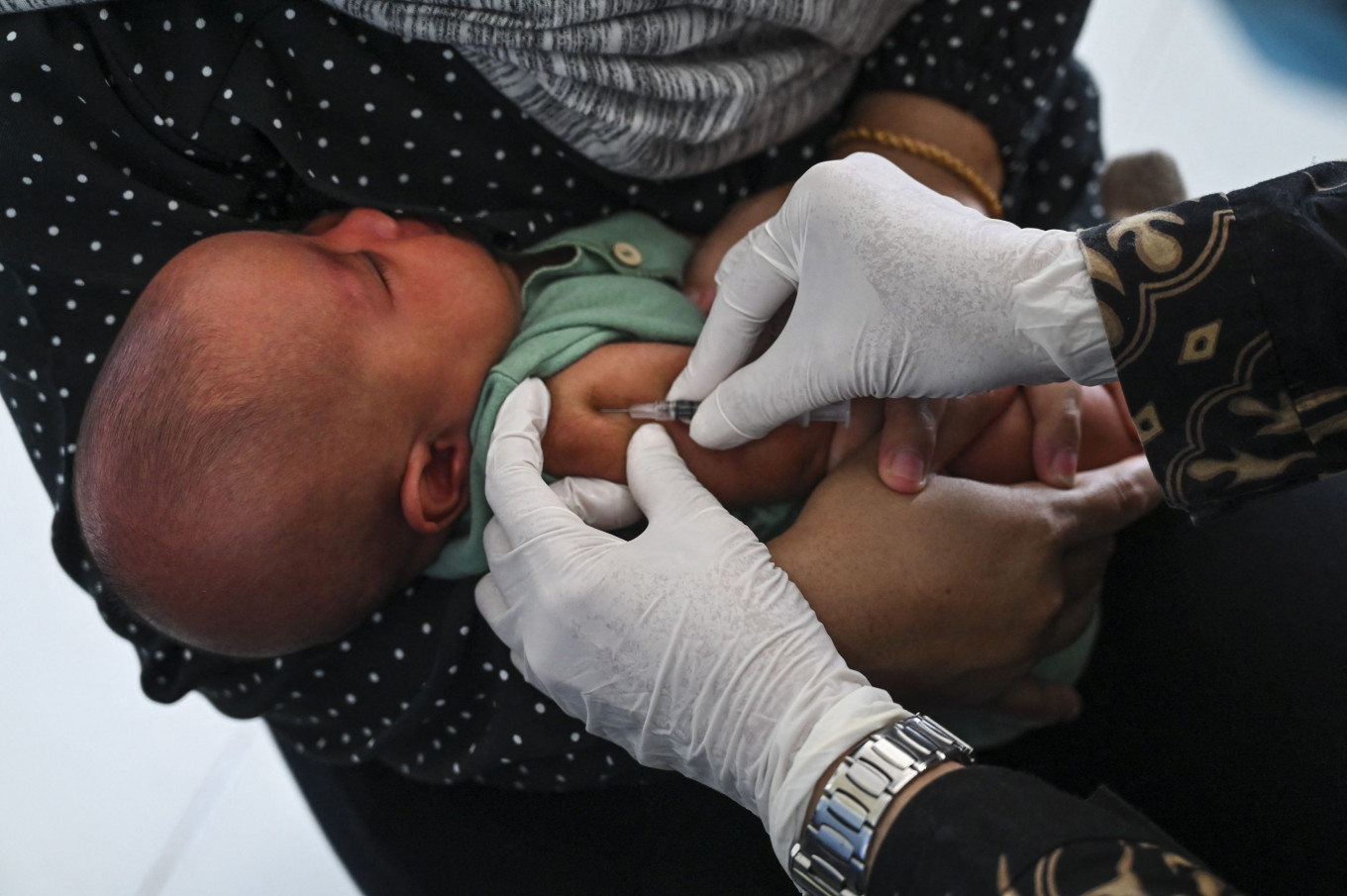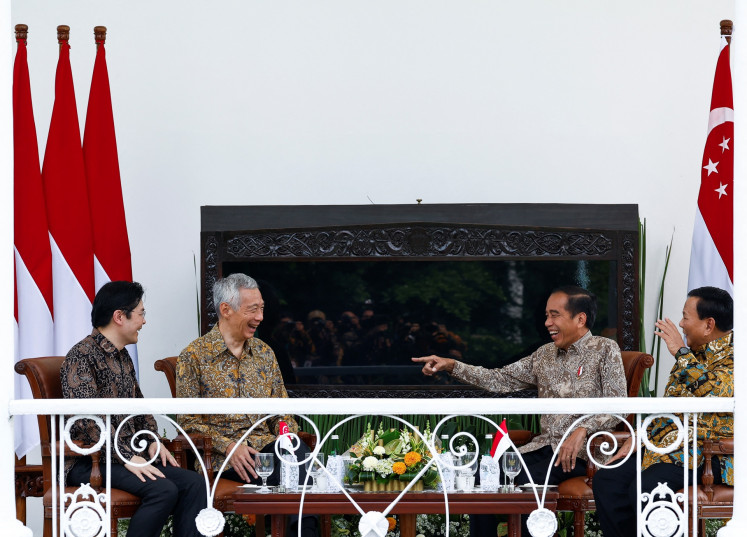Fighting TB, the biggest infectious killer
Because of a lack of resources, in 2021, we only diagnosed about 6 million cases, of which more than 430,000 came from Indonesia
Change Size
 A baby receives the Bacillus Calmette-Guerin (BCG) vaccine for tuberculosis during a national immunization for children program at an integrated services post in Banda Aceh on June 9, 2022. (AFP/Chaideer Mahyuddin)
A baby receives the Bacillus Calmette-Guerin (BCG) vaccine for tuberculosis during a national immunization for children program at an integrated services post in Banda Aceh on June 9, 2022. (AFP/Chaideer Mahyuddin)
T
he infectious disease that killed the most people last year is one we’ve heard almost nothing about: Tuberculosis. In 2022, it likely claimed 1.4 million lives, more than the total toll of COVID-19. And yet, in rich countries—where virtually nobody dies from tuberculosis any longer—attention has moved on.
Even in poor countries, where the wealthier can afford treatment, it is often the poorest, most disconnected and disadvantaged that suffer from this disease.
The world has long promised to do better. As part of the United Nations’ global goals, known as the Sustainable Development Goals, all nations promised to fix almost every global problem by 2030, tuberculosis among them. That’s not going to happen. With respect to tuberculosis, we will be decades late.
Indeed, we are failing on almost all the world’s 2030 promises. Based on current trends, the world will be half a century late delivering across all its promises. The reason is clear: politicians made an impossible 169 promises, but having 169 priorities is indistinguishable from having none. Crucial targets on nutrition, education, and tuberculosis are put alongside much more peripheral promises like boosting recycling, more urban parks, and promotion of lifestyles in harmony with nature.
This year, the world will be at halftime for its 2030 promises, yet it will be nowhere near halfway. It is time to identify and prioritize the most crucial goals. My think tank, the Copenhagen Consensus, is doing exactly that: Together with several Nobel laureates and more than a hundred leading economists, we have been working for years to identify where each rupiah can do the most good.
A new, peer-reviewed study shows that a dramatic reduction in tuberculosis is not only possible but is one the most effective priorities leading up to 2030.
Almost a quarter of all people in the world carry the tuberculosis bacteria. Even in rich Europe and the United States, every 10th person has it. For most well-off, well-nourished people, it will not develop into disease, but it is a risk for the less fortunate. In that way, tuberculosis is a disease of hunger and poverty.
Each year, more than 10 million people develop tuberculosis. Because of a lack of resources, in 2021, we only diagnosed about 6 million cases, of which more than 430,000 came from Indonesia. Almost half of the people who are untreated will go on to die. Those who don’t die will continue to spread the infection — on average, actively infected people can infect five to fifteen others through close contact over a year.
Moreover, the six million who are diagnosed and offered treatment are in for a rough time. They must take medication for as long as six months. Because the medication clears the immediate tuberculosis symptoms like fevers and weight loss in a couple of weeks, many will drop out of treatment too early.
When people stop treatment too early, it not only increases the chance that the disease can be passed on to others, it also makes the surviving tuberculosis bacteria more likely to develop drug resistance. This means the next treatment could require 18‒24 months of treatment and will be much costlier.
We can do much better. It’s possible to diagnose many more people and ensure most TB patients stay on their medication. Our new study shows this can be achieved for an additional US$6.2 billion annually. It is less than what the world has already promised — already in 2018, the UN promised to increase funding by about $7-8 billion annually by 2022. Disappointingly, spending since 2018 has declined.
The additional $6.2 billion annually can deliver diagnosis, care, and prevention that will achieve the world’s tuberculosis promises. It would ensure at least 95 percent of people with tuberculosis will receive a diagnosis. It can provide simple ways to make sure people complete their six months of medication—perhaps with incentives to complete the treatment, such as food, clothing, juice boxes, or gift cards, or through support groups for patients to encourage each other. These days, apps on your cellphone can also help.
The extra resources will mean that high-risk, vulnerable populations will be able to access periodic screening. Over the coming decades, 50 million people will access appropriate treatment and 35 million people will have access to preventive treatment.
This will dramatically reduce tuberculosis deaths by 90 percent. It will essentially wipe out tuberculosis, as we should have done decades ago. Up to mid-century, the additional resources will allow us to avoid an astounding 27 million deaths, along with untold human suffering. The total benefits, expressed in economic terms, mostly from avoided deaths, would reach $3 trillion. Each dollar spent will generate $46 of social benefits for the world.
Global dithering has allowed tuberculosis to become the biggest infectious killer. Ending TB is one of the world’s most effective policies. We have promised way too much for 2030, but tackling tuberculosis is one of the few, most effective policies we must carry through.
***
The writer is president of the Copenhagen Consensus and visiting fellow at Stanford University's Hoover Institution.










